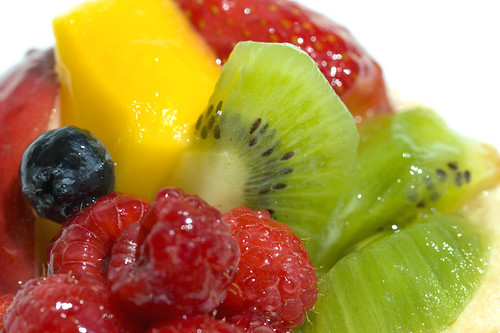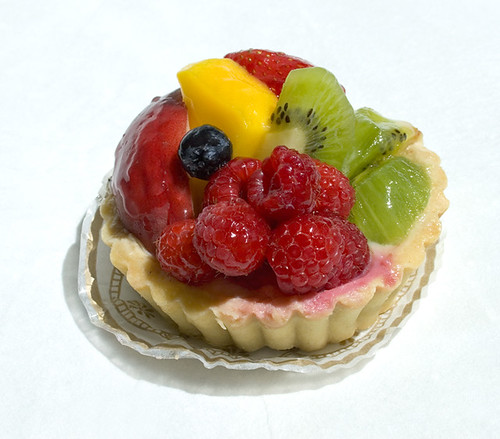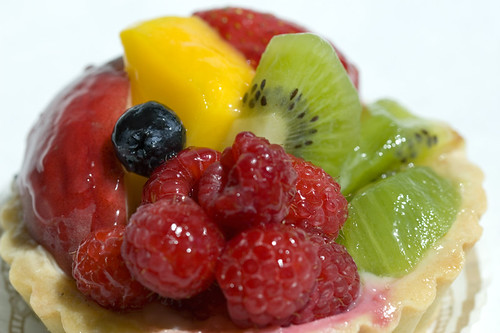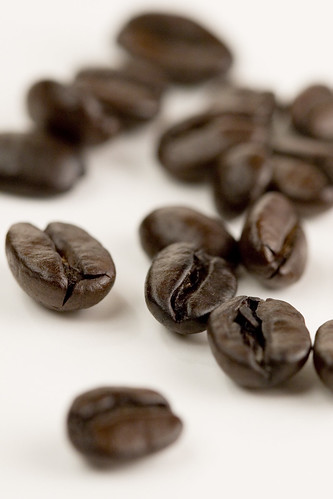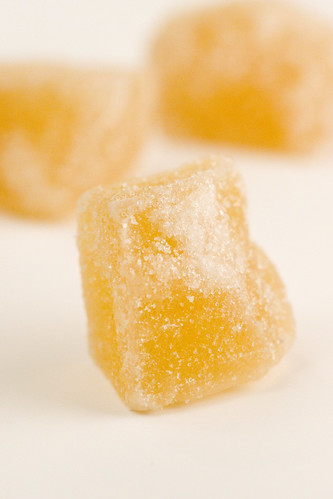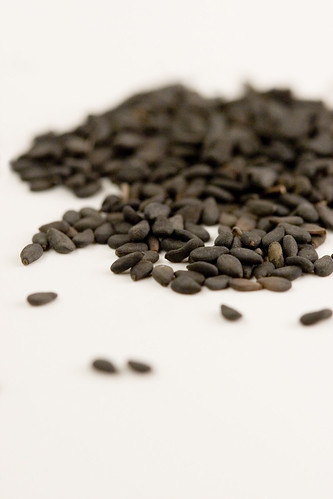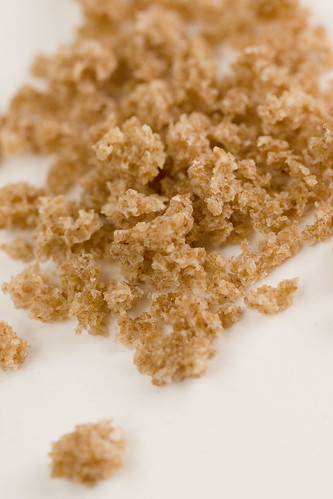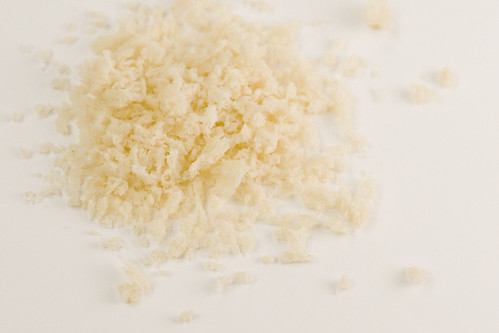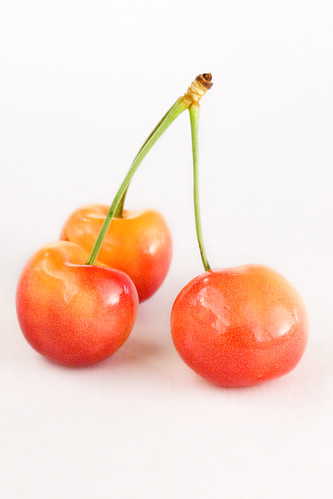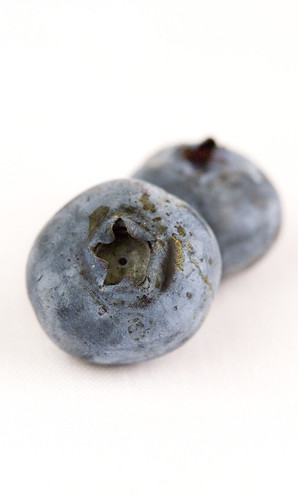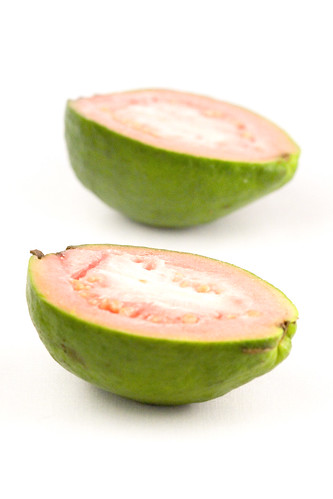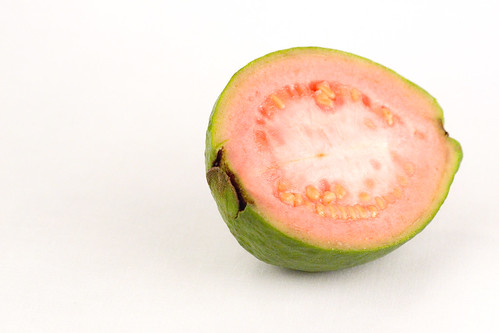New Amazon store
Published by nika on Wednesday, August 30, 2006 at 6:43 PM.
I am beta testing a new feature at Amazon that lets me host an aStore where I make recommendations. In this case its supplies one might consider for food photography. These are the things I use. The store may expand if its of use to anyone.
There is also a permalink in the left sidebar. Bear with this post as the system works to display it correctly in this blog post.
There is also a permalink in the left sidebar. Bear with this post as the system works to display it correctly in this blog post.
Well Fed Network Article - Latino Sweets: Guava
Published by nika on Sunday, August 27, 2006 at 11:57 AM.
Here is an article of mine published at the Sugar Savvy blog, part of the Well Fed Network.
You can see that I pulled some of the material from my last post into this article. Writing the article was my inspiration for pulling together the whole Colombian Breakfast How-2 guide post.
Latino Sweets: Guava
In Colombia, where I was born, there is a profusion of fruits that can be had as is or are rendered into delicious sweets. There are many fruits that Americans will not usually see unless they travel down for a visit.
One such fruit is the Guava. Guava in spanish is Guyaba or Guyabana. Some informative links on the Guava fruit include:
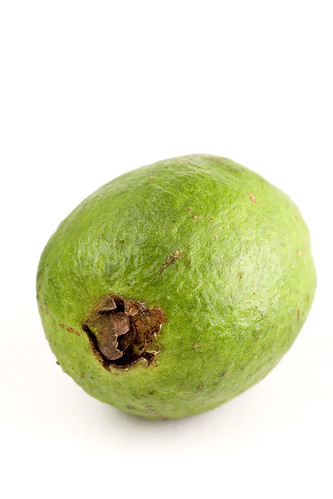
(An unpeeled guava fruit - Photo credit copyright © 2006 Nika Boyce)
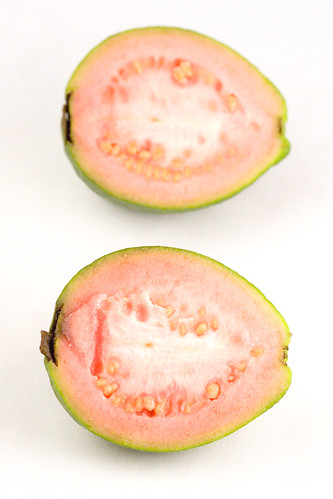
(A sliced guava fruit - Photo credit copyright © 2006 Nika Boyce)
More and more you can buy this fruit here in the US and it is possible to get the divine guava paste. If you find that, (in your Goya section) give it a try!

(Goya Guava Paste- Photo credit copyright © 2006 Nika Boyce)
You can eat the paste straight or experiment with it on various breads and recipes. Colombians like to put it on a hot arepa, as shown below, or simply served with queso blanco (farmer's cheese).

(Guava paste on an arepa- Photo credit copyright © 2006 Nika Boyce)
It would be great as a fruit center in cookies (I have to try that, do not have photos to show you, sorry for the tease!).
Another way Colombians like to partake in the guava is in what is called a Fresco. These are like American smoothies and have been made in South America for ages. Frescos can be made from all manner of fruits, my favorite is a black raspberry fresco.
Guyabana Frescos
Ingredients:
small dice of very ripe guava (without peel)
very cold milk
sugar
Directions:
Note: The amounts used are personal preference and also dependent on how many you want to make!
In a blender mix the milk, sugar and fresh fruit.
Serve immediately.
I have memories of black raspberry (mora) frescos being served fresh in Pereira, Colombia in my Aunt's home. I stood at the back door and sipped my mora fresco as I watched the daily noon-time tropical rain shower beat down the leaves in the garden. The fresco cooled me inside, the cold marble floor cooled my bare feet, and cool rain-smelling mountain breezes swirled around me.
Yet another way that Colombians like to eat this fruit is when it is not ripe. They peel it, cut it into small pieces and then down it as a chaser after a shot of aguardiente. You could do the same with pineapple chunks too. Aguardiente is one of Colombia's signature national spirits (along with divine Colombian Rum). It is a real fire water, tastes like black licorice, very potent.
There are other ways to enjoy Guava, if you would like to add yours, please share!
Related Posts:
You can see that I pulled some of the material from my last post into this article. Writing the article was my inspiration for pulling together the whole Colombian Breakfast How-2 guide post.
Latino Sweets: Guava
In Colombia, where I was born, there is a profusion of fruits that can be had as is or are rendered into delicious sweets. There are many fruits that Americans will not usually see unless they travel down for a visit.
One such fruit is the Guava. Guava in spanish is Guyaba or Guyabana. Some informative links on the Guava fruit include:
* TROPICAL GUAVA- (Psidium guajava L.) - California Rare Fruit Growers, Inc.
* Guava Wiki entry


More and more you can buy this fruit here in the US and it is possible to get the divine guava paste. If you find that, (in your Goya section) give it a try!

You can eat the paste straight or experiment with it on various breads and recipes. Colombians like to put it on a hot arepa, as shown below, or simply served with queso blanco (farmer's cheese).

It would be great as a fruit center in cookies (I have to try that, do not have photos to show you, sorry for the tease!).
Another way Colombians like to partake in the guava is in what is called a Fresco. These are like American smoothies and have been made in South America for ages. Frescos can be made from all manner of fruits, my favorite is a black raspberry fresco.
Guyabana Frescos
Ingredients:
small dice of very ripe guava (without peel)
very cold milk
sugar
Directions:
Note: The amounts used are personal preference and also dependent on how many you want to make!
In a blender mix the milk, sugar and fresh fruit.
Serve immediately.
I have memories of black raspberry (mora) frescos being served fresh in Pereira, Colombia in my Aunt's home. I stood at the back door and sipped my mora fresco as I watched the daily noon-time tropical rain shower beat down the leaves in the garden. The fresco cooled me inside, the cold marble floor cooled my bare feet, and cool rain-smelling mountain breezes swirled around me.
Yet another way that Colombians like to eat this fruit is when it is not ripe. They peel it, cut it into small pieces and then down it as a chaser after a shot of aguardiente. You could do the same with pineapple chunks too. Aguardiente is one of Colombia's signature national spirits (along with divine Colombian Rum). It is a real fire water, tastes like black licorice, very potent.
There are other ways to enjoy Guava, if you would like to add yours, please share!
Related Posts:
- How-2 guide on how to make Platanos (fried plantains or tostones)
- Yucas Fritas (Fried Yucas or Cassava Root) Recipe and How 2 photos
- Empanadas - The Recipe
- Flash Flickr Movie of How to make Colombian Empanadas
- Chicharron - Deep fried pork belly - How To
- How to make Colombian Empanadas - directions
- Latest full recipe for Colombian Bunuelos (2006 post)
- Last year's Christmas Bunuelo Decadence
- A Colombian breakfast How-2 guide
- Colombian Frescos
- Lechona preparation
A Colombian breakfast How-2 guide
Published by nika on Monday, August 21, 2006 at 11:45 AM.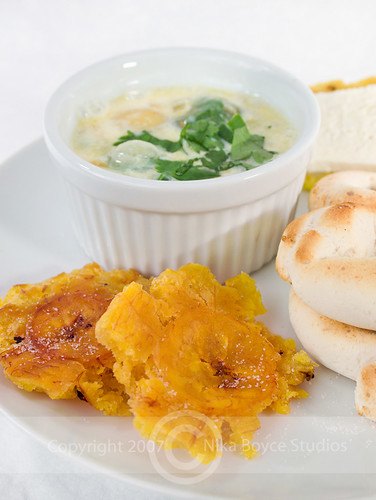
A Colombian breakfast is not just one thing like you might think a proper English fry up would be.
I think that a Colombian breakfast can actually have many different possibilities limited only by the appetite, types of leftovers, and guided by the region of Colombia you are in/from.
This post discusses a breakfast that includes changua, arepas, pan de bono, and patacones. (I will talk about how to make each of those items below.) What you dont see is what you might have to drink with this meal. That could include aqua de panela, strong Colombian coffee, or even steaming hot chocolate.
It could easily have been beans, rice, chicharrones, and fried eggs with a side of hogao.
This breakfast is an amalgam of breakfasts I had as a kid at home and while on vacation in Bogota, Colombia.
This set of food may LOOK simple but it can take a while and lots of energy.
I would suggest starting with the Pan De Bono and I will cover that first.
Pan De Bono
Note: The translated ingredients and directions on the mix I show below are incorrect! I will give you the correct directions here in English.
Ingredients:
1 box of Pan De Bono mix
3 cups grated fresh queso blanco (farmer's cheese - do not try to substitute this. Go to a latino market and get it fresh)
3 tablespoons melted butter
3 teaspoons sugar
1 cup milk
Directions:
Grate the queso blanco with a fine grater. It is fragile and will crumble/grate easily. Do enough to equal 3 cups. Try to buy enough so that you can eat some slices of it later.
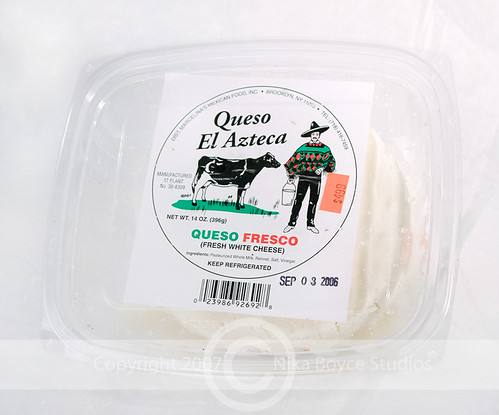
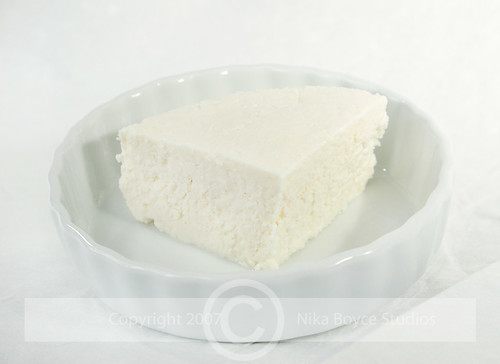
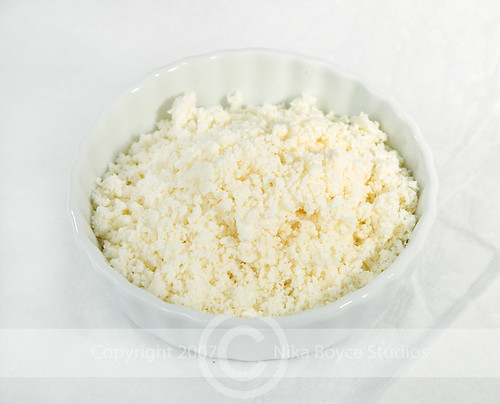
Pour the mix, grated cheese, milk, and butter and knead until it comes together into a smooth dough.

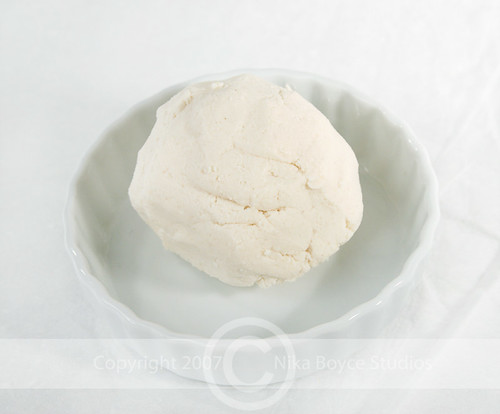
Pinch off small balls and then knead a bit more and then roll out into little snakes about 3.5 inches long and 1/2 inch thick. Gently pinch the snake into a little circle and bake at 450 F on parchment for about 15 minutes.


While baking these circles will puff up and then brown. Remove and cool. Enjoy!

Next you might want to fry up your patacones. I have covered that in a previous post called How-2 guide on how to make Platanos (fried plantains or tostones).

Next you might want to make you arepas.
Colombian Arepas
Ingredients:
2 cups Masa Harina (very finely ground corn meal. Do NOT use regular corn meal. I talk more about what to use below)
3 cups BOILING water (MUST be boiling)
2 teaspoons salt
Directions:
I suggest this brand of Masa Harina

In a large bowl pour in 2 cups of harina, 2 teaspoons of salt and mix well. Add the 3 cups of boiling water and mix with a spoon. Before it cools much knead it with your hands. My grandmother starts kneading almost right away with her heat-tolerant asbestos hands! I cant do that so I let it cool a bit.
Knead into a rubber not overly sticky ball. If its very sticky add more harina. I had to do that and feel that I need to work more on my technique!

Form the dough into little patties and then either grill or cook in a well seasoned cast iron pan. Its ok ifthe interior is a bit moist. These can burn easily and dry out easily. I like them toasty, adds nice flavor.

You can serve them with butter, slices of queso blanco, or even guava paste.
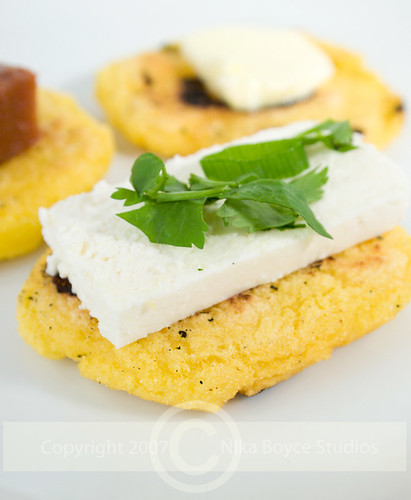
Here is a shot of a package of Guava Paste (super sweet).


Ok, now you have all the sides to the main part of the breakfast, Changua!
This is a very rich concoction of milk and eggs that is quite filling and very welcome in the morning.
My father ADORED changua and this dish reminds me so much of him that I actually feel sad when I think of it, make it, and eat it. I can still see him bending over a fresh bowl of changua, beaming with joy, inhaling the scent and blissing out on the flavor and the memories from Colombia. We lost my father in 1999 to brutal early onset Alzheimers Disease.
Colombian Changua
Ingredients:
4 cups milk
4 or 6 eggs
1/4 cup diced onions (I used vidalias)
2 tablespoons butter
Dash of cominos
diced green onions, to taste
diced cilantro, to taste
Directions:
Melt butter in a large milk-boiling-friendly pot, add onions and cominos. Saute on low heat until golden brown.
Add 4 cups of milk and bring to a rolling simmer (do not boil so hard that it boils over, that only puts you in a bad mood).
Once up to the boiling simmer add eggs Allow to simmer for between 5 and 10 minutes (some people like the egg well cooked, others like it barely cooked at all).
Add diced green onions and cilantro to serving bowls and then ladle out servings that include eggs and plenty of broth.
Enjoy with all the sides you made all morning long and then collapse on the couch for a leisurely nap.
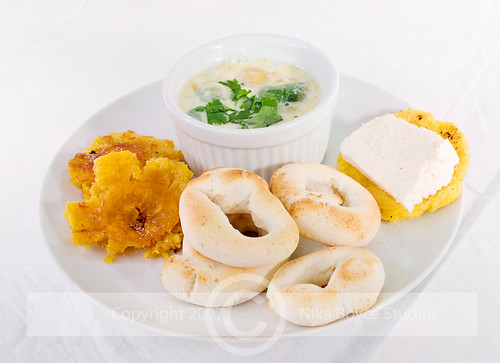
Related Posts:
- How-2 guide on how to make Platanos (fried plantains or tostones)
- Yucas Fritas (Fried Yucas or Cassava Root) Recipe and How 2 photos
- Empanadas - The Recipe
- Flash Flickr Movie of How to make Colombian Empanadas
- Chicharron - Deep fried pork belly - How To
- How to make Colombian Empanadas - directions
- Latest full recipe for Colombian Bunuelos (2006 post)
- Last year's Christmas Bunuelo Decadence
- A Colombian breakfast How-2 guide
- Colombian Frescos
- Lechona preparation
Well Fed Network Article - Grenadine Lemonade
Published by nika on Saturday, August 19, 2006 at 9:41 AM.
Here is my monthly installment at The Spirit World blog on The Well Fed Network.
Enjoy!
Grenadine Lemonade
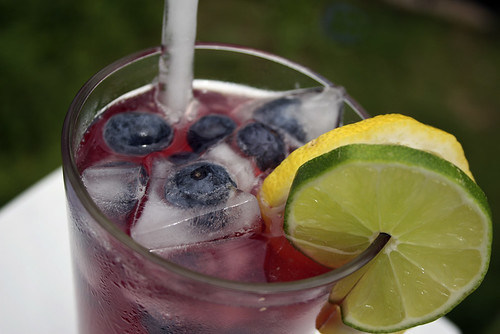
© 2006 Nika Boyce
I have been playing with non-alcoholic drink possibilities that are not too onerous to concoct but that are somewhat different from the usual. The heat here in rural MA has backed off slightly and there is some hope for more comfortable days. Certainly 80s is better than 105 in the shade!
I also wanted to make a bit of a foray into the syrups that are used to make many classic cocktails. I chose Grenadine and set off to the liquor store to find it.
Let me tell you, you have to either be oblivious or have a big ego to not notice the stares you get when you walk into a liquor store 7 1/2 months pregnant with your 9 year old in tow.
To compensate for being there I bought all these extra non-alcoholic items like peppery bacon and cheeses and more. Didn't help because people were looking at my tummy and not my bacon snacks in the cart!
Anyway, I look at the list of ingredients on the grenadine bottle when I get home and no where is there mention of actual juice, let alone pomegranate juice.
This was a sad thing for me because I was under the impression that grenadine was a pomegranate syrup. This syrup sure didn't taste very good either. It reminded me of a really cheap snow cone.
At this point I decided that pomegranate juice is not that hard to get a hold of and I set out to make my own grenadine. It is well worth the small trouble as it tastes completely different.
To make homemade Grenadine do the following:
Ingredients:
white sugar
100% pomegranate juice
Directions:
Simmer 1 part sugar and 1 part pomegranate juice for about 10 minutes on medium. You want the sugar to dissolve and for the syrup to reduce slightly.
Allow to cool and then experiment with your favorites. Some of the almost 600 cocktails using grenadine, with recipes, can be found here on The Spirit World or at this WebTender link.
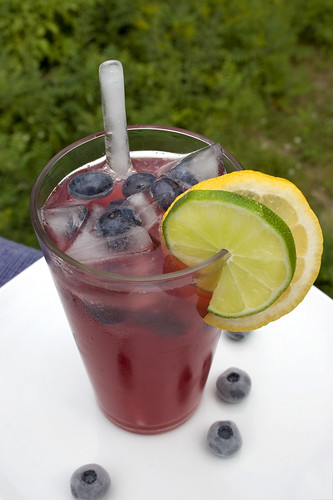
© 2006 Nika Boyce
I used my new grenadine to make Grenadine Lemonades, a recipe I conjured myself.
Ingredients:
1/2 C fresh squeezed lemon juice
1/4 C freshly made and cooled grenadine syrup
ice cubes
1 C cold sprite, seltzer water, or ginger ale to taste. (amount depends on size of serving glass, mine was a pub glass)
lemon slices, lime slices and frozen blueberries to garnish.
Directions:
Chill all juice, syrup, and soda.
Fill glass with ice cubes (I froze some blueberries into my cubes), add soda to 1/2 point, add juice and grenadine and then top off with soda. Mix gently. Add garnishes if desired.
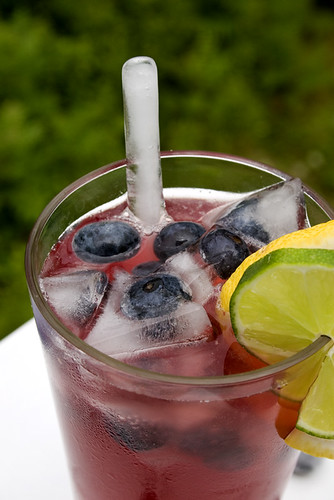
© 2006 Nika Boyce
Enjoy!
Grenadine Lemonade

I have been playing with non-alcoholic drink possibilities that are not too onerous to concoct but that are somewhat different from the usual. The heat here in rural MA has backed off slightly and there is some hope for more comfortable days. Certainly 80s is better than 105 in the shade!
I also wanted to make a bit of a foray into the syrups that are used to make many classic cocktails. I chose Grenadine and set off to the liquor store to find it.
Let me tell you, you have to either be oblivious or have a big ego to not notice the stares you get when you walk into a liquor store 7 1/2 months pregnant with your 9 year old in tow.
To compensate for being there I bought all these extra non-alcoholic items like peppery bacon and cheeses and more. Didn't help because people were looking at my tummy and not my bacon snacks in the cart!
Anyway, I look at the list of ingredients on the grenadine bottle when I get home and no where is there mention of actual juice, let alone pomegranate juice.
This was a sad thing for me because I was under the impression that grenadine was a pomegranate syrup. This syrup sure didn't taste very good either. It reminded me of a really cheap snow cone.
At this point I decided that pomegranate juice is not that hard to get a hold of and I set out to make my own grenadine. It is well worth the small trouble as it tastes completely different.
To make homemade Grenadine do the following:
Ingredients:
white sugar
100% pomegranate juice
Directions:
Simmer 1 part sugar and 1 part pomegranate juice for about 10 minutes on medium. You want the sugar to dissolve and for the syrup to reduce slightly.
Allow to cool and then experiment with your favorites. Some of the almost 600 cocktails using grenadine, with recipes, can be found here on The Spirit World or at this WebTender link.

I used my new grenadine to make Grenadine Lemonades, a recipe I conjured myself.
Ingredients:
1/2 C fresh squeezed lemon juice
1/4 C freshly made and cooled grenadine syrup
ice cubes
1 C cold sprite, seltzer water, or ginger ale to taste. (amount depends on size of serving glass, mine was a pub glass)
lemon slices, lime slices and frozen blueberries to garnish.
Directions:
Chill all juice, syrup, and soda.
Fill glass with ice cubes (I froze some blueberries into my cubes), add soda to 1/2 point, add juice and grenadine and then top off with soda. Mix gently. Add garnishes if desired.

Dazzling Fruit Tart
Published by nika on Wednesday, August 16, 2006 at 12:27 PM.More food shots
Published by nika on Wednesday, August 09, 2006 at 9:42 AM.Fruit series
Published by nika on Tuesday, August 08, 2006 at 2:30 PM.Philosophical Tomatoes
Published by nika on Monday, August 07, 2006 at 9:53 AM.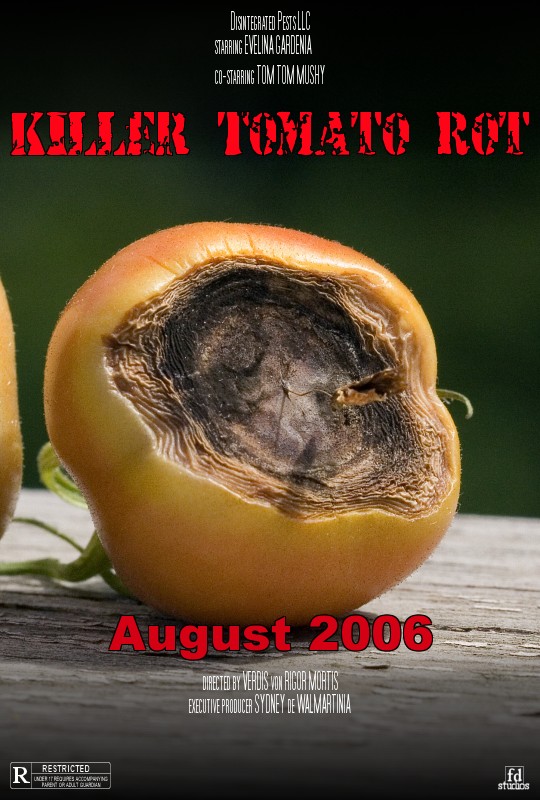
Blossom End Rot, I know thy name.
My cherry tomato plant has been slowly yielding and it has lots of green fruits teeing up for their shot at the big time.
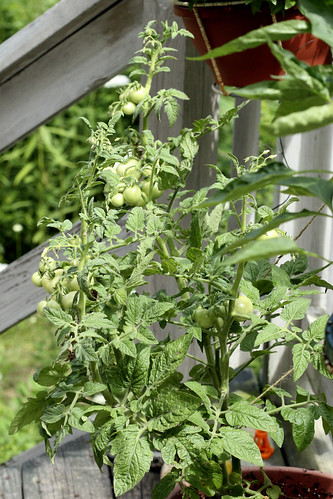
My larger plum tomato (at least thats what I think it is, I forgot!) also has many fruits ready to ripen.
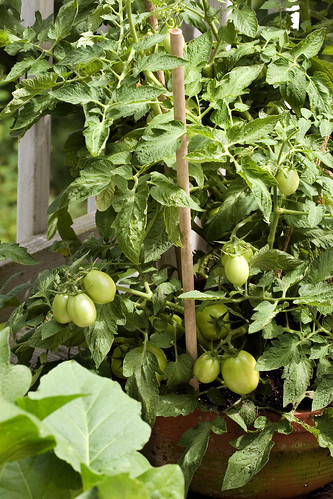
I noticed a few on this larger plant that had begun to ripen but then when I looked closer, they were evil looking.
Case in point is this shot that shows how they are rotting from the blossom end!
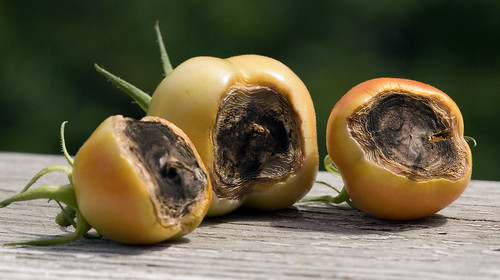
Brenda from Culinary Fool was able to identify what this is immediately and even provided a link on Blossom End Rot.
You might think I am beside myself in anger or despair but I am not really. There is a chance to fix this problem.
Thus I am actually thankful for this small lesson in horticultural illness, something a plump red juicy unblemished store tomato would never have taught me.
Food can feed your brain as well as your tummy.
